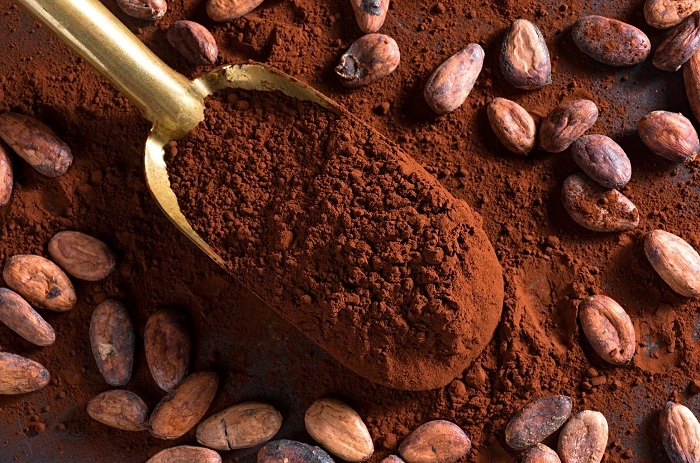Cocoa powder is a pantry staple used in countless desserts, from brownies and cakes to cookies and hot chocolate. But what if you’re in the middle of a recipe and realize you’re out of cocoa powder? No need to panic! There are several excellent cocoa powder substitutes you can use, depending on what you’re making and the flavor or texture you need.
In this guide, we’ll explore the best cocoa powder substitutes, how to use them, and important tips to ensure your recipe still turns out delicious.
Table of Contents
What Is Cocoa Powder?

Before we dive into substitutes, let’s briefly cover what cocoa powder does in recipes:
- Flavor: It provides a rich chocolate flavor.
- Color: Adds a deep brown color.
- Texture: Contributes dryness, balancing out moisture in batters and doughs.
- Structure: In some recipes, especially cakes, it plays a role similar to flour.
Knowing these functions helps us choose the best alternatives.
Best Cocoa Powder Substitutes
1. Unsweetened Chocolate
Why it works:
Unsweetened chocolate is made from pure cocoa solids and cocoa butter, making it the closest match to cocoa powder in flavor.
How to use:
Replace 1 tablespoon of cocoa powder with 1 ounce of unsweetened chocolate, melted. Reduce the fat (like butter or oil) in your recipe by 1 tablespoon to account for the extra cocoa butter.
2. Dark Chocolate or Semi-Sweet Chocolate
Why it works:
These chocolates contain cocoa solids, sugar, and fat. They’re great when you want extra sweetness and richness.
How to use:
Replace 1 tablespoon of cocoa powder with 1 ounce of dark or semi-sweet chocolate, melted. Again, reduce added fat in the recipe slightly.
3. Carob Powder
Why it works:
Carob powder has a naturally sweet, slightly nutty flavor and similar color and texture to cocoa powder. It’s also caffeine-free.
How to use:
Use 1 tablespoon of carob powder for 1 tablespoon of cocoa powder. You may want to reduce sugar slightly since carob is naturally sweeter.
4. Dutch-Processed Cocoa Powder
Why it works:
If your recipe calls for natural cocoa powder, Dutch-processed cocoa (which is alkalized) can be used in its place, though the flavor is smoother and less acidic.
How to use:
Substitute 1:1 ratio. If the recipe relies on baking soda (which reacts with natural cocoa’s acidity), you might need to add a touch of acid like vinegar or buttermilk.
5. Hot Chocolate Mix
Why it works:
In a pinch, a hot chocolate mix can provide chocolate flavor, though it contains sugar and milk powder.
How to use:
Use 2 tablespoons of hot chocolate mix for 1 tablespoon of cocoa powder and reduce sugar in the recipe to avoid over-sweetening.
6. Chocolate Syrup
Why it works:
While more liquid and sweetened, chocolate syrup delivers chocolate flavor. Best for sauces, drinks, or no-bake desserts.
How to use:
Use 3 tablespoons of chocolate syrup for 1 tablespoon of cocoa powder, and reduce other liquids slightly.
Quick Substitution Table
| Substitute | Amount per 1 tbsp Cocoa Powder | Adjustments Needed |
| Unsweetened Chocolate | 1 oz melted | Reduce fat by 1 tbsp |
| Dark/Semi-Sweet Chocolate | 1 oz melted | Reduce fat & sugar slightly |
| Carob Powder | 1 tbsp | May reduce sugar (naturally sweet) |
| Dutch-Processed Cocoa Powder | 1 tbsp | Add acid (vinegar/buttermilk) if needed |
| Hot Chocolate Mix | 2 tbsp | Reduce sugar |
| Chocolate Syrup | 3 tbsp | Reduce liquid content |
When Not to Substitute Cocoa Powder
While these substitutes work well in most cases, there are times when cocoa powder is irreplaceable:
- Recipes requiring precise texture and dryness (like macarons)
- When you need strong, pure chocolate flavor without added sweetness
In such cases, it’s best to wait until you have cocoa powder available.
Running out of cocoa powder doesn’t have to ruin your baking plans. Whether you have unsweetened chocolate, carob powder, or even chocolate syrup on hand, there’s always a reliable substitute available. Just keep in mind each alternative’s sweetness, fat content, and moisture levels, and adjust your recipe accordingly.

